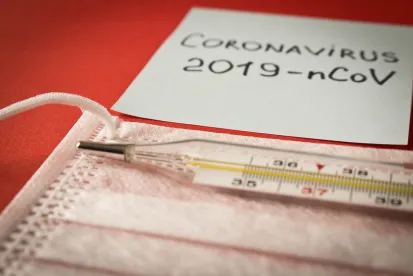As we explained in an earlier post, the Colorado Department of Labor and Employment (“DLE”) has issued new Health Emergency Leave with Pay (“HELP”) Rules in response to the coronavirus. Effective March 11, 2020, the HELP Rules mandate employers provide four (4) days of paid sick leave for employees in certain industries who have flu-like symptoms to receive COVID-19 testing. The DLE has since released FAQs to clarify some ambiguities in the HELP Rules.
Four Calendar Days of Paid Sick Time
Per the FAQs, the four days of paid sick leave are measured in calendar days. This means that if an employee becomes sick on a Thursday and gets tested, the leave is Thursday through Sunday and the employee gets paid only for those days on which they actually would have worked.
Importantly, if an employer already provides paid leave, then the employer does not need to provide additional leave. Further, this leave may overlap with the new federal Emergency Paid Sick Leave requirements.
Covered Industries
The FAQs also offer additional details regarding which employers are covered by the HELP rules.
-
Leisure and Hospitality: Arts, entertainment, and recreation industries, and accommodations and food services. Examples include amusement parks, museums, events centers, golf courses, and hotels.
-
Food Services: Places that prepare food and beverages for consumption on or off the premises, such as restaurants, bars, coffee shops, and food trucks.
-
Child Care: Establishments that care for young children, such as nursery schools and child or infant day care centers.
-
Education: Public, private, or non-profit establishments that provide teaching, instruction, or training in a wide variety of subjects. Examples include colleges and universities, as well as trade schools, tutoring, and computer training.
-
Home Health: Establishments that provide skilled medical, nursing, and other health or personal care services in the home. This category covers visiting nurse associations, home infusion therapy services, and in-home hospice care.
-
Operating a Nursing Home: Establishments offering inpatient nursing and rehabilitation services, generally with a permanent core staff. This includes convalescent homes, assisted living facilities for the elderly with nursing care, and inpatient hospice facilities.
-
Operating a Community Living Facility: Entities providing a range of residential and personal care services for the elderly and other persons who are unable to care for themselves or who do not wish to live independently. This includes assisted living facilities without on-site nursing care and rest homes without nursing care.
If an employer is engaged in multiple fields, the HELP Rules will only apply to those employees working in one of the categories listed above. For example, an employer whose business has a cafeteria must provide paid sick leave under the rules only to those employees working in that sub-division.
Availability
The FAQs also clarify that paid sick leave is available for all workers, regardless of their pay rate or method (e.g., hourly, weekly, per-project), and is provided at the employee’s regular rate of pay. As we explained in our previous post, for employees paid with a tip credit, the rate of pay is minimum wage. If an employee worked a variable rate of pay or hours, the rate of pay is the average rate of pay for the preceding month.
Employee Notice & Required Documentation
Unless they are too ill to communicate, employees must give notice of their absence as soon as possible, and notify their employer of getting a COVID-19 test within 24 hours of the prescription for the test.
The FAQs also explain that employers may require employees to submit documents to demonstrate their need for paid sick leave under the HELP Rules. Supporting documentation may be either from (1) the health care provider who prescribed the COVID-19 test or (2) the provider of the COVID-19 test. The documentation should show the name, contact information, type of provider (e.g., medical clinic, hospital, lab), the provider’s prescription for a COVID-19 test or that such a test was performed, and the date of the prescription or test. Should such documents be unavailable, the employee may provide any other documents available plus a written affirmation from the employee stating which items are not available.
Except if they are too ill to communicate, the employee must provide the supporting documentation by the end of their illness or their return to work, whichever is sooner; however, they need not provide the documentation in any particular form, and may offer duplicates rather than originals. Furthermore, the employee is permitted to redact any personal or medical information that is not part of the above-requested information.





 />i
/>i
